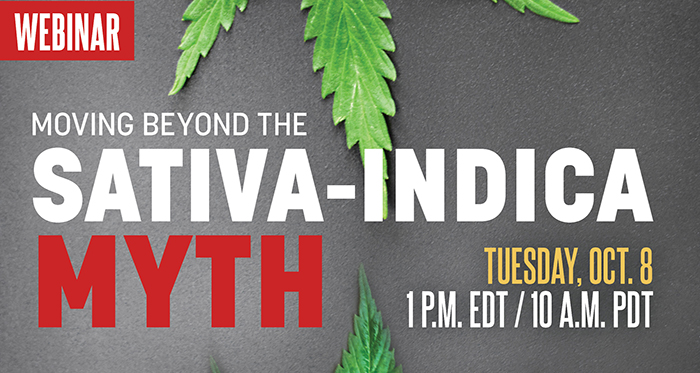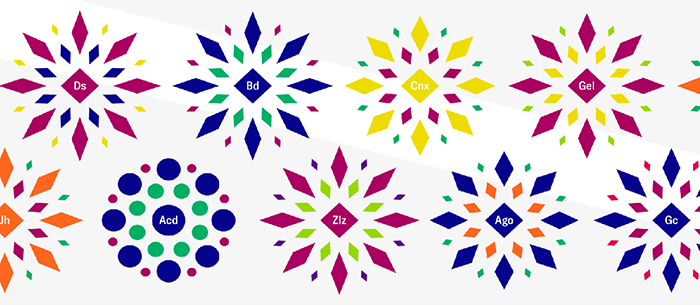How Leafly’s New Cannabis Guide Will Impact Businesses’ Relationships With Consumers and Patients
Marijuana Industry News October 4, 2019 MJ Shareholders
More than once in my time at Farma—the nation’s first dispensary to focus on phytochemical data and not the indica/sativa dichotomy—a customer would slink away to the corner of the store to check out what Leafly had to say about a particular “strain.”
The website’s model of simplifying complex phytochemistry into broad categorizations of indica, sativa and hybrid was extremely accessible and helped consumers feel like they were taking the guess work out of tough choices. Of course, this model also left out important variables—namely, the unique chemical makeup of each individual batch of flower that helps predict both therapeutic and experiential outcomes. This week, Leafly launched a sweeping overhaul of that old convenient but over-simplified system.
Taking a cue from countless studies and industry leaders who have long advocated for phytochemical data over broad and inaccurate categorizations, Leafly has designed a new system to help consumers visualize the “ingredients” that make up unique chemical profiles in cannabis: the Cannabis Guide.
Of course, cannabis is an extremely chemically complex plant with a great deal many more secrets to divulge, especially in terms of how it works within vastly more complex and diverse human body chemistries. While this fresh take from Leafly does much to deepen the discussion around the importance of phytochemical ingredient differentiation to help predict therapeutic and experiential effects, it represents only the tip of the isomer iceberg. The exploration of how complex compounds work together to create polymodal actions stands to revolutionize the cannabis, caregiver and pharmaceutical industries and give voice to the synergistic systems of which we are each comprised.
How Does the Leafly Cannabis Guide Work?
Up until now, chemovars on Leafly’s website were classified according to the three colloquial categories: Indica (purple), Sativa (red) and Hybrid (green). There was an emphasis on subjective effects, but also included phytochemical averages when available.

Leafly
The new guide uses a series of simple shapes, colors and sizing to express variances in phytochemical data averages as aggregated from a combination of lab-sourced analyses and people-sourced reviews:
The overall graphic is reminiscent of a flower, with three concentric rings surrounding a central shape.
Diamonds and circles are used to denote primary cannabinoids THC and CBD, with the central shape indicative of cannabinoid-type dominance. (CBG is reportedly incorporated as well, but no information is given on the website as to what to look for when seeking out CBG-rich chemovars. Additionally, CBG-rich flower is a bit proprietary at this point and may not be easily expressed as an average in a single lineage.)
More on the hits and misses of this model below.
The size of the diamonds and circles shown in the concentric rings signify that cannabinoid’s average potency; larger diamonds indicate higher THC percentages.
Equal representation of circles and diamonds indicate a mixed-ratio varietal.
Colors represent terpenes. The primary, secondary and tertiary rings surrounding the central dominant cannabinoid are color-coded according to the average principle terpenes found in a specific chemovar. There are eight possible colors/terpenes that can be represented.
Cannabis Guide Hits
The indica/sativa dichotomy and subjective energy associations haven’t completely disappeared, but they are de-emphasized in the updated model. This is important as consumers long accustomed to old vernacular begin to navigate a more complete picture through the language of phytochemistry. Starting from a place of mutual understanding will ultimately ensure a more seamless transition.

Leafly
Awareness of how certain profiles correlate to personal preferential patterns can help consumers make better choices for themselves. Once they find the profiles they like the best, and if their favorite retailer is able to provide up-to-date chemovarietal information, the consumer should be able to walk in and pick something out even if she doesn’t recognize a single “strain name” on the shelf. This is great news not just for consumers but also for growers focused on proprietary genetics—who are willing and able to participate in phytochemical analysis—as desirable compound profiles start to outweigh easily recognizable names.
This model puts the control into the consumer’s hands: a long-standing legacy of cannabis in and of itself.
But the component that I might be most excited about is the inclusion of a “Flower Finder.” Here, customers can plug in the cannabinoid and terpene profile that they want and receive personalized “strain” recommendations. You liked that flower with 20-percent THC and a primary terpene profile of limonene, beta-caryophyllene, and pinene? Here are three, five or 10 more chemovars that are likely to have a similar profile. Cool stuff.
…And Misses
I hesitate to critique this new guide as I do truly believe it is a huge step in the right direction from Leafly’s tremendously influential platform, but there are a few things to keep in mind as we continually seek to improve upon old systems and more fully track this plant’s promise.

Minor cannabinoids like CBG, CBC and THCV are underrepresented or left out altogether.
These molecules often show up in small amounts and may be difficult to average among a given “strain name” but can reach as high as 7 percent in some cultivations. And it is likely that we will soon see minors turn into majors in the flower of the future—like the CBG-rich examples some growers are currently working on.
Even in the lesser amounts we see today, these minor cannabinoids can make or break therapeutic benefits for medical patients and can also play a role in modulating, mitigating or amplifying the intoxicating characteristics of a given chemovar. Phytochemical analysis and its subsequent interpretation should be considering all discoverable cannabinoids, which still only represent a handful of the over 100 cannabinoids the plant is capable of producing.
Minor and trace terpenes that help to define the unique characteristics and therapeutic values of the user experience are left out of the picture.
With only eight terpenes to choose from and only three of those eight represented for any given chemovar, the “strain” snapshot remains incomplete. This is great news not just for consumers but also for growers focused on proprietary genetics—who are willing and able to participate in phytochemical analysis—as desirable compound profiles start to outweigh easily recognizable names. Data that could prove useful to understanding preferential and experiential patterns through terpene/cannabinoid synergies remains limited in this model.
In a perfect world, even quick reference guides would have seven or eight of the top terpenes listed to improve predictive reliability.
And on while we’re on the subject: Terpenes in the guide are color-coded according to subjective and isolated effects.
First, a great deal of the evidence we have on terpenoid effects comes from aromatherapeutic studies, not studies on combustion and inhalation. Second, most of the studies that we do have discuss either isolated terpenes and their effects when ingested or terpenes tested in tandem with other constituents from their source, like tea tree oil for instance. Third, suggesting that myrcene is always deeply relaxing or that limonene is always associated with energetic highs doesn’t take into account how these molecules work when they are side by side or how they might create a very different response within an individual body.
After years of analyzing phytochemical data for the flower on Farma’s shelf, I began to recognize profile patterns that reliably correlated to experienced effects in the average consumer. For instance, rich myrcene levels in disparate proportion to other terpenes often indicated a calm but lucid effect in most people. Or when myrcene was in near equal percentages with limonene, the chemovar often conveyed a strong stony euphoria when THC levels were at moderate to rich potencies. Patterns are only possible to recognize when the data is good and when people are paying attention.
Lessons Learned
To Leafly’s credit, they acknowledged most of these concerns in a two–part preamble that accompanied the release of the Cannabis Guide. In addition to describing the best way to navigate the new system, the supplementary text also laid down the fundamentals of phytochemistry, why it should be important to growers and consumers and recognized a lack of standardization in analytical testing. They also highlighted the difficulties some growers face when hit with the added cost of terpene testing not required by most states—craft cultivators still supplying that data to consumers are going above and beyond and should be commended for their dedication to better consumer outcomes.

Leafly
The two-part piece also made a clever analogy to Leafly’s expanded, but still streamlined chemovar profiles: online dating.
“You can get a sense of someone’s personality from a dating profile, but you’ll have to go on a date to see if you really match.”
Much like online dating, the Cannabis Guide may be imperfect, but it’s a great way to get the ball rolling and begin to better understand preferences. The closer we can move towards understanding more of the powerful and synergistic compounds like those found in cannabis—compounds that play off of one another to increase therapeutic and experiential value—the closer we will be to revolutionizing the way we approach medicine. With their Cannabis Guide, Leafly has just lit a fire under that movement.
Andrea Sparr-Jaswa is the science editor of Cannabis Business Times and Cannabis Dispensary.
MJ Shareholders
MJShareholders.com is the largest dedicated financial network and leading corporate communications firm serving the legal cannabis industry. Our network aims to connect public marijuana companies with these focused cannabis audiences across the US and Canada that are critical for growth: Short and long term cannabis investors Active funding sources Mainstream media Business leaders Cannabis consumers









